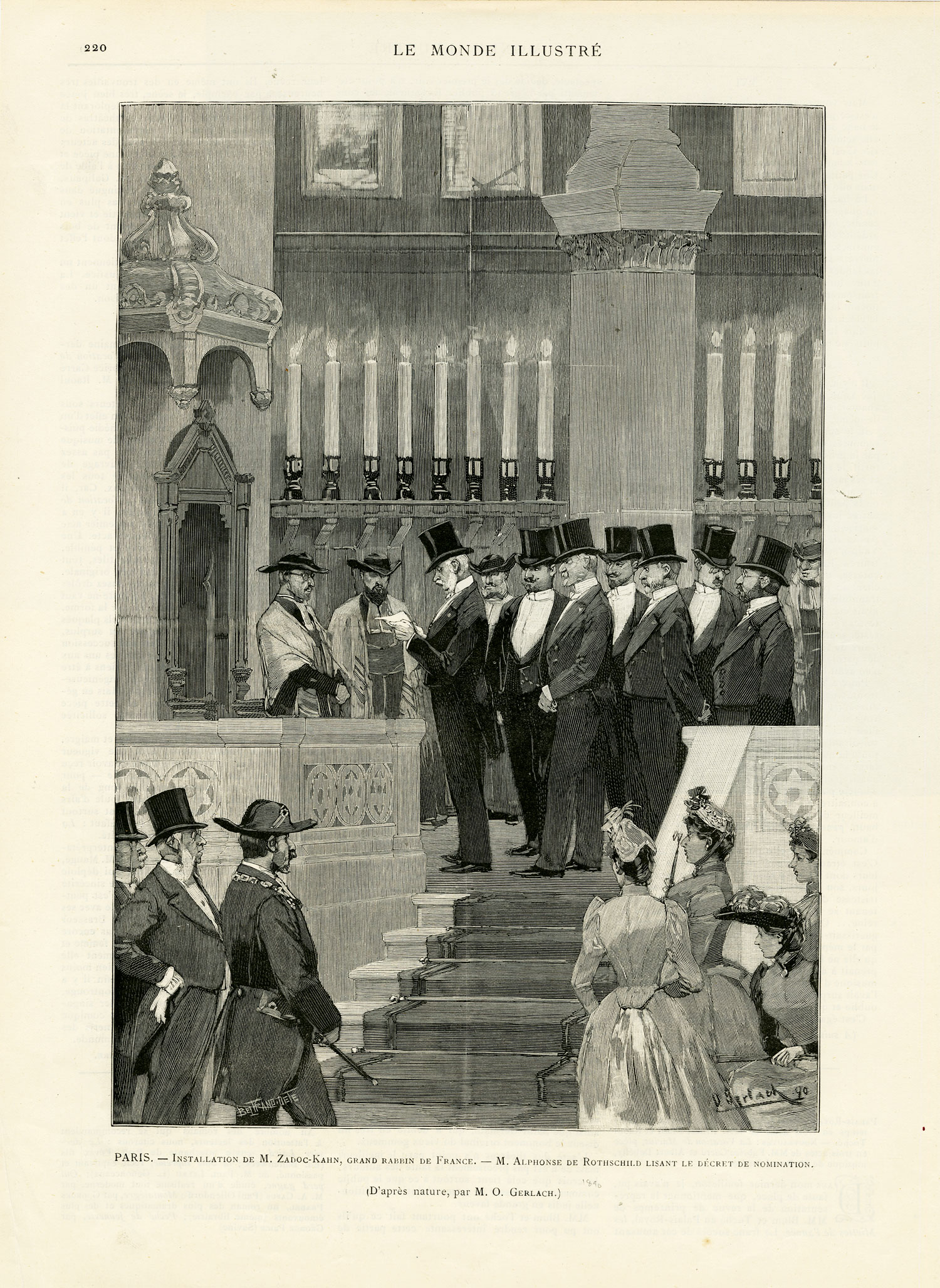The 1890 installation of Zadoc Kahn (1839–1905) in the Grand Synagogue on the rue de la Victoire in Paris marked the beginning of his tenure as Chief Rabbi of France, a position awarded to him after a unanimous vote in 1889. Alphonse de Rothschild, head of the Rothschild banking family of France, is shown reading the decree of appointment to the rabbi in front of a group of well-dressed dignitaries.
During his tenure, Kahn was often frustrated by limitations on his public role because of the state’s involvement in religious affairs; he nevertheless was able to achieve significant improvements in the lives of Jews in France and abroad. During the 1881–1882 pogroms in Eastern Europe, he was unable to change national policy to increase Jewish immigration to France; but, in 1889, he played a central role in the first organized Jewish settlement in Argentina. Likewise, during the Dreyfus Affair, which followed Alfred Dreyfus’s conviction for treason, Kahn was not allowed to visit the Jewish captain and was constrained from expressing his conviction that the accusations against Dreyfus were anti-Semitic. Still, he supported the family by testifying to the morality of Alfred Dreyfus. Although Kahn had close ties to Zionist leader Theodor Herzl and the Zionist movement, he also stood by French nationalism and the French state, which he had vowed to serve.
Kahn had more success in his cultural and philanthropic activities. He founded several organizations, including, in 1880, the Société des Études Juives, dedicated to promoting the development of studies about Jewish religion, history, literature, and society. He organized the relief movement for Jews expelled from Russia and was devoted to the work of the Alliance Israélite Universelle, which elected him honorary president. He also helped establish many private charitable institutions.
Rabbi Zadoc Kahn was the last official Chief Rabbi of France. The law separating church and state was passed on December 9, 1905, a day after his death.
